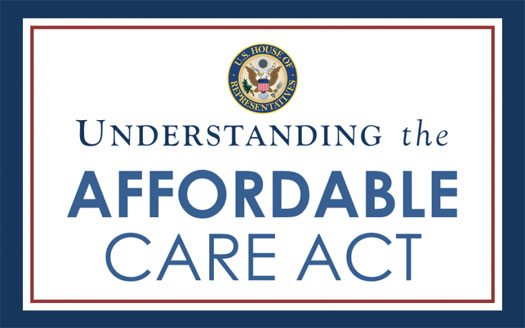
August 8, 2017; Washington Post
Immediately after the Senate failed in its final attempt to either repeal or replace the ACA, President Trump tweeted, “3 Republicans and 48 Democrats let the American people down. As I said from the beginning, let Obamacare implode.” Based on his administration’s lack of action, he seems willing to do everything he can to make his words come true.
The annual enrollment period for health insurance under the Affordable Care Act, the time when those wishing to get insurance for 2018 must choose their plan, is set to begin on November 1st. For more than 10 million people, that short six-week period is all the time they have to assess the changes in the coverage that will be available for 2018, including new premiums, and decide whether they want to reenroll for their current coverage or select a new plan or provider. This process isn’t easy, and the penalties for not completing it within the timeframe is high—insurance coverage may be lost or the wrong level of coverage may be selected.
Under the Obama administration, the federal government assertively worked to offer encouragement and support, especially through the use of nonprofit ACA “navigators.” According to the Washington Post,
In each of the past four sign-up seasons, the Obama administration was a clear cheerleader for the marketplaces, engaging in widespread marketing efforts, supporting nonprofit “navigators” who helped with community-based enrollment and loudly proclaiming the availability of insurance plans—and federal subsidies—to just about anyone without employer-sponsored coverage, Medicare or Medicaid.
One way to ensure that the ACA will “implode” is to impede or withhold this effort, and that seems to be the administration’s game plan. When the Centers for Medicare and Medicaid, which are responsible for managing the sign-up process, were asked by the Washington Post what the plan was for the new enrollment cycle, they would only state, “As open enrollment approaches, we are evaluating how to best serve the American people who access coverage on HealthCare.gov.” Even that statement was quickly retracted.
In June, the organizations, many of them nonprofits, with federal government contracts to help individuals navigate the healthcare system, attended a meeting in Baltimore with HHS officials to learn about the upcoming enrollment process. They left knowing only that this was going to be a difficult year for their organizations and those trying to navigate the system.
Sign up for our free newsletters
Subscribe to NPQ's newsletters to have our top stories delivered directly to your inbox.
By signing up, you agree to our privacy policy and terms of use, and to receive messages from NPQ and our partners.
Daniel Bouton, Health Insurance Marketplace Program Manager for the Community Council of Greater Dallas in North Texas, told the Post, “Every time the question was brought up, the only answer we received is they were working on it, and they hadn’t made a final decision about whether they were going to have a marketing campaign this year.” Jessie Menkens from the Alaska Primary Care Association asked, “Is there a commitment at this time to proceed with this outreach?” Menken reported their response was, “They very kindly said, ‘We’re not able to provide a commitment to that.’”
State officials who are responsible for coordinating with the federal government have been no more successful in receiving guidance.
Heather Korbulic, executive director of Nevada’s marketplace…has tried to find out whether HHS intends to contact Nevadans with ACA health plans to remind them to enroll—a particularly pressing issue because the state exchange operates under a hybrid system and pays about $5 million to rely on HealthCare.gov. She also has tried to get federal officials to provide a list of currently enrolled residents so the state can notify them directly.
“I ask this question every week,” Korbulic said. “It’s verbal, written, and to different levels of management…We are desperately seeking answers.’”
Limiting implementation support will make it difficult for the program to reach the same number of people it had in prior years. But that’s not the only way the administration’s lack of action is hurting those most vulnerable. Following passage of the ACA, the House of Representatives went to court challenging the payments made to these navigator programs, alleging they were not specifically permitted under the new law. While the legal process went forward, the Obama administration continued with this element of the ACA, and insurance companies saw it as an important element of the overall program. The President tweeted his recognition of the importance of these subsidies…and threatened to withhold them: “ObamaCare is in serious trouble. The Dems need big money to keep it going—otherwise it dies far sooner than anyone would have thought.”
The impact of this uncertainty has been seen in increased rates and the withdrawal of insurance companies from the marketplace. According to S&P Global, just this week saw Anthem Insurance take both paths, as it announced significant changes to its operations in two more states, Nevada and Georgia. Earlier this year, it had exited California, Wisconsin, and Indiana. Business Insider reported, “Nevada Insurance Commissioner Barbara Richardson said in a statement that Anthem requested a 62 percent average rate increase, without factoring in the cost-sharing reductions, or CSRs, that many insurers have relied upon.” Fourteen counties in Nevada would end up with no insurance available under the ACA.
The weight of Trump’s strategy of allowing ACA to falter through inaction will first fall on the households who will again find themselves uninsured and facing pain of unaffordable medical bills. The hospitals, doctors, and nonprofit organizations that serve them will scramble to protect them. And, the president who promised that we’d have “great health care…in a much-simplified form. Much less expensive and much better” is going to leave millions in the lurch, paying more for what little coverage they can get.—Martin Levine












